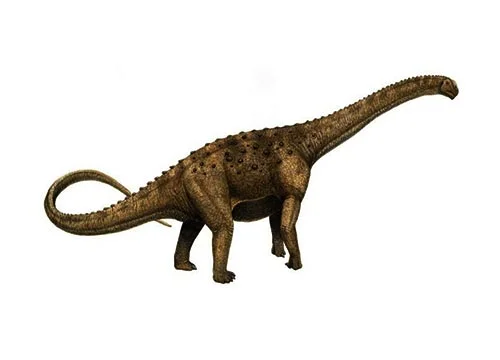Janenschia (named after Werner Janensch)

Ya-nen-she-a
Rupert Wild - 1991
Herbivore
Estimated 20 meters long
Sauropod
J. robusta (type)
Tanzania - Tendaguru Formation
Late Jurassic, 154-150 million years ago
Janenschia Facts
Janenschia is a genus of sauropod dinosaur that lived during the Late Jurassic period, approximately 154 to 150 million years ago. It was first described by German paleontologist Werner Janensch in 1950 and is named in his honor.
Janenschia was a large herbivorous dinosaur, estimated to have reached a length of about 20 meters (66 feet) and a weight of up to 30,000 kilograms (33 short tons). It is known from several nearly complete skeletons, making it one of the best-known sauropods from the Late Jurassic of Africa.
Janenschia had a long neck and tail, a relatively small head, and a large body supported by four sturdy legs. It is believed to have been a quadrupedal animal that grazed on vegetation, using its elongated neck to reach higher branches. Its front feet were larger and more robust than its hind feet, which is a common feature among sauropods.
One of the most distinctive features of Janenschia is its elongated cervical vertebrae, which are the bones that make up the neck. These vertebrae are much longer than those of most other sauropods, and some of them are over 1 meter (3 feet) in length. This adaptation allowed Janenschia to reach higher vegetation than other sauropods that lived during the same time period.
Janenschia is known from fossil remains found in Tanzania, Africa. It lived in a humid environment, which was characterized by dense forests and river systems. The discovery of Janenschia and other sauropods from the Late Jurassic of Africa has helped paleontologists better understand the evolution and distribution of these fascinating dinosaurs.



